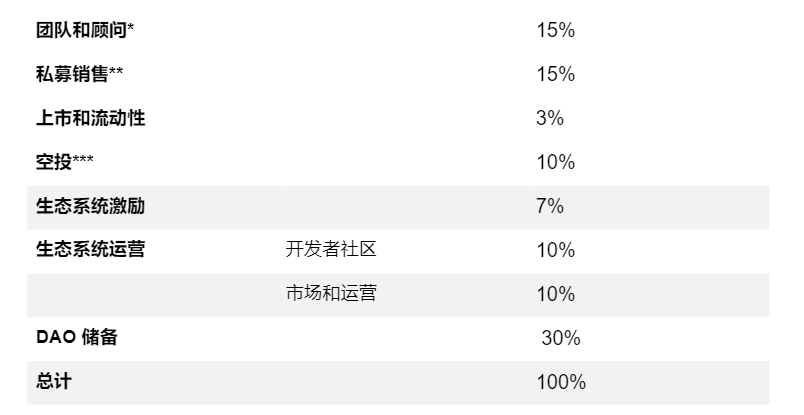Relation Protocol announces its native token REL economic model
Relation Protocol unveils its REL token economic modelRelation Protocol has formally announced its native token REL’s token economics model to empower Web3 social users.
Relation, an innovative decentralized social graph protocol, has announced the token economics model of its native utility and governance token REL. With a total supply of 1 billion tokens, REL aims to drive the development of the Relation ecosystem and provide users with many practical tools, thus redefining the social network landscape through decentralized and token-based incentive measures.
About Relation
Relation is a decentralized social graph protocol that can build account systems and decentralized data layers on existing blockchains. This approach can generate complex, interrelated data structures with built-in privacy and interoperability features, creating a more transparent, fair, and user-centric social network experience. By leveraging the graph data model RDF, Relation builds a semantic layer on Web3, enabling the integration of AI algorithms to provide personalized and intelligent Web3 experiences. By standardizing data formats and implementing programmable social privacy, Relation enables developers to create decentralized applications (dapps) with meaningful community relationship management. Through its native token REL, Relation allows users to take control of their social network experience and actively participate in platform governance.
Relation Token Distribution
The distribution of 1 billion REL tokens is as follows:
- With the rise of the APP Chains, what is its past life, present life and future?
- The ATOM 2.0 white paper is about to be released, can the value capture capability of Cosmos be improved?
- Technical Guide | Teach you how to build a commercial DAO without a bank

* Unlock 10% 6 months after TGE, followed by a lock-up period of 6 months, and then a monthly release of 36 months
** Unlock 16% 3 months after TGE, followed by a lock-up period of 6 months, and then a quarterly release of 18 months
*** Unlock 10% after TGE, followed by a daily release for 365 days
REL Token Utility
As an important part of the Relation ecosystem, REL tokens provide multiple utilities:
-
Support for future scalability solutions networks: REL tokens will be used to support future scalability solutions to ensure smooth and efficient network operations.
-
Social credential verification: Staking REL tokens can become a verification node to verify social credentials in the Relation protocol, further enhancing the platform’s credibility and trustworthiness.
-
Protocol governance: Token holders can participate in the future development and decision-making process of the Relation protocol, creating a truly decentralized platform.
-
Proposal pledging: REL holders can pledge their tokens to propose and receive rewards, thereby encouraging community interaction and active participation.
-
Protocol service payment: Users can use REL tokens to pay for various services within the Relation protocol, such as the Relation.soul service.
Jessica Chang, founder of Relation, said: “By introducing the REL token and its applications in our ecosystem, we have taken an important step towards empowering decentralized social networks.” “Our commitment is to create a truly decentralized and democratic social platform that aims to promote meaningful tokenized relationship management, AI-driven community building, and help social users seamlessly join the Web3 world.”
Relation Labs official website link
We will continue to update Blocking; if you have any questions or suggestions, please contact us!
Was this article helpful?
93 out of 132 found this helpful
Related articles
- LikeCoin wait 21 days to cancel the delegation? Talk about Cosmos's proof of bound equity BPoS
- Bitcoin Technology Weekly: Statechain, Schnorr signature and BIP322
- Technical Guide | IPFS Relationship Genealogy, Technical Framework and Working Principle
- Technical Primer | GHAST Rule Upgrade (Part 1)
- Why is Filecoin different? IPFS founder talks about its proof system
- Technical direction: Bandwidth optimization in transaction forwarding (1)
- Viewpoint 丨 Ethereum 2.0 technology sharing
